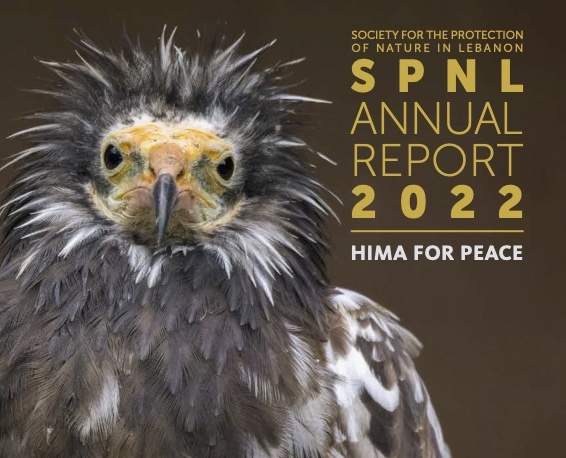
Launch of SPNL’s 2022 Annual Report: Revival of Hima Creates A Homeland
We are delighted to announce the launch of the Society for Protection of Nature in Lebanon (SPNL) 2022 report, available now for download. This annual report is designed to give you an overview of SPNL’s main achievements in 2022. You will also find an overview of the current programmes and projects and the significant results achieved.
Since more than 30 years, SPNL decided to revive the Hima approach. That decision was a historic step in promoting the conservation of biodiversity and the preservation of nature and its resources through a traditional approach that was adopted by Arab peoples and practiced by Lebanese villages and towns as an inherited tradi- tion of land use, ensuring the sustainable use of natural resources, i.e. the rational exploitation of resources and the preservation of nature’s capa- bility to replenish its resources. This is known the “Hima approach”, based on the traditional classification of land according to its usages.
Today, there are 28 natural Hima sites in various Lebanese regions. These did not need a law to be issued by the Lebanese Parliament, in spite of its importance, especially a law that considers the Hima as one of the 4 categories of protected areas. But this needed perseverance and a strong and determined will, long-term dialogue and partnership with municipal councils, which are considered the strongest and most sustain- able link in the protection of nature if their deci- sion-making lies in the hands of a homogeneous group convinced of the importance of adopting and developing the Hima approach. From Ebeles-Saqi through Kfar Zabad, Anjar, Qoleileh, Mansouri, Andeket, Menjez, Maabour Alabiad, El-Fakiha, Kherbet Kanafar to Anfeh, Aakoura, Tarshish, Jbeil, Aitnit, Kafermata, Chemalan and Keifoun, the Hima sites are spread in different areas of Lebanon. Their uses range from grazing, sustainable hunting, water manage- ment, organic and responsible agriculture and protection of biodiversity and forests. It worthy to note that the Hima approach is supported by Birdlife International, which has adopted the Hima approach in its strategy by linking it to the world’s most important areas of birds.
We hope you enjoy reading the report
SPNL-Annual-Report-2022